Author: P. Shalini
Most cities and civilisations have grown on the banks of the rivers. The identity of the city and its people is closely tied to the river’s history. Hyderabad city, built around the river Musi, is no exception.
River Musi is also called the Moosa, Muchkunda and Musinuru, a tributary of river Krishna flowing through the Telangana State. River Musi divides Hyderabad city into the new city and the old city. The river originates from Anantagiri Hills near Vikarabad District and joins the river Krishna at Wadapally, in Nalgonda district. It has an aggregate length of 250 km, and its 20 km stretch within the city is the most polluted and reduced to mere sewage.
More often than not, there is one single narrative of the city and the urban river. These dominant narratives are mostly bureaucratic and top-down in nature. Particularly, these narratives were focused on understanding a city through planning and exploring the processes from a technical lens. Because these narratives focused on physically built form, there was a gap in understanding the cultural narratives of the city and the urban river. The stories of the communities and their experiences with the river were missing in these single narratives. Therefore, it is essential to explore the multiple narratives of the River Musi from those who live close to the river and witness the river through their lives. The communities who live along the river Musi have stories about the river that tell us how their lives intertwine with the river’s life and how the change and evolution of the river have been impacting their lives.
The oral narratives of the communities living along the river Musi are significant to understanding the change that the Musi river went through. To look at the past, present and future of the Musi, their memory of the river through celebration, mourning, rituals and their dependence on it is significant.
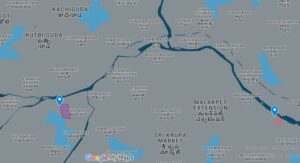
Fig 1: A map of selected neighbourhoods along the river Musi – Moosa Nagar, Moosarambagh, Vaddera Basti
Moosa Nagar, a basti at Chaderghat, got its name because of its proximity to the River Moosa or Musi. To understand the evolution of the river, it thus becomes imperative to explore how the neighbourhoods surrounding it have evolved over the years.
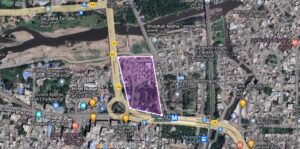
Fig 2: A snapshot of Moosa Nagar neighbourhood along the river Musi at Chadarghat
Moosa Nagar is an old neighbourhood that is situated across the river stretch. In the erstwhile united Andhra Pradesh state, the communist party of India has a strong presence in Hyderabad city. This is observed in how the elders in the community, even today, recollect their memories about land rights.
An elder in Moosa Nagar, Hari Chander, recollects the role of Communist Party of India (CPI) member Syed Azeez Pasha, who helped them acquire the land pattas (rights) for their neighbourhood in 1981.
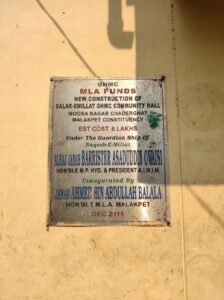
Fig 3: The picture of an inauguration board of the Community Hall at Moosa Nagar
Cultural and Spiritual Significance: Musi as a source of celebration:
The elders in the community remember witnessing the congregation of hundreds of women from all over the south of Hyderabad during the Bathukamma Festivities[1] at this place. Women from all social groups celebrate the festival with unique seasonal flowers, most with medicinal values. Historically, Bathukamma meant “the festival of life” and celebrated the harvest season in the Deccan region. It also has become the marker of the unique regional identity of the people of Telangana. There was also a mention of their memory of hearing that the alams[2] were washed during the procession of the Muharram in the city.
One of the elders, Daulat Bi from the basthi, vividly recalls the memory of watching women all in half sarees and sarees carrying the Bathukamma (flower-like structure) in their hands and dancing together. The young men in the community congregate and sing Bathukamma songs, and women play and sing along. After the festival, all the women, as per the ritual, would leave their flower Bathukamma into the rivers of Musi and pray for the well-being of their families and community and go back home.
“Tab tho ek zamane mein hum logaan wahan khela karte the, tairain karte the. Bathukamma ko aas paas hi nahi door se auratein tayyar hoke aate the Bathukamma le leke aur yahan gaa leke naach ke yahan musi mein hi Bathukamma ko daalke jaate the. Wo daur hi kuch aur tha.” (Those were the times when we would play and swim in the river. The festival of Bathukamma was celebrated by the women who would come from nearby and far-off places. They would get ready, come here and dance, and leave the Bathukamma in the river. Those times were very different)
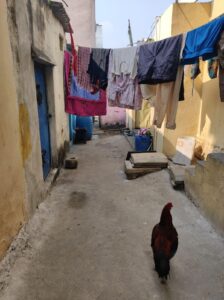
Fig 4: A picture of the lane right behind the River Musi in Moosa Nagar
Musi as a source of work:
One of the elders from the community, Hari Chander, has mentioned that in the 1970s and 1980s, during the tenure of Indra Sena Reddy as the MLA, there was a Dhobhi Ghat that was established wherein the people from the washer folk community would come to the shore of the river in this Basthi and wash the clothes.
They mentioned that the water was clear, and one could see their feet. After that, because of the pollution and the sewage being mixed with the water, the washer folk community left the place; they could no longer wash their clothes there. The only family left in the community lives in the basthi.
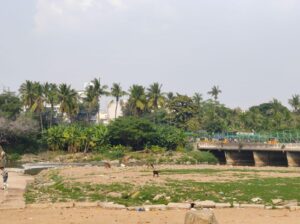
Fig 5: A picture of the open space along the River Musi in Moosa Nagar under the Chadarghat Bridge, where children and young people spend their evenings
Just a few kilometres away from this place is another neighbourhood called Moosarambagh, where the washerfolk community has been using the place along the river Musi for decades to wash clothes. These spaces are called “Dhobi Ghats”, and even today, there are around 56 dhobi ghats within the city designated and built across the river. While the community members believe that the traditional caste role of their community to wash clothes is not as rigid as it used to be, the older members of the family depend on this role, and consequently on the river and the place around it, to wash the clothes.
A man from the washer folk community who uses the Dhobi Ghat shares his memory:
“There are around 56 Dhobighats right now in Hyderabad along the river Musi. Many families from the community dependent on washing as their profession previously. But slowly, because of the pollution and the economic vulnerability, most of the families slowly moved out. Now, there are only eleven families here who wash clothes. We also don’t depend on river water anymore. Previously we used to wash our clothes with the river water, but this river is dead now with sewage and pollution. The government helped construct these ghats for our community long back and also provided us with different sources of water to wash our clothes. I am not sure if these will stay in the next ten years. The nearby wastes—animal waste from slaughterhouses and households and industrial wastes from nearby factories all mix here. We remember the Musi River water to be clean once upon a time, and things have changed so much in the past two decades. My children will not be in this profession anymore. But it would be beneficial if the government could help the community with better technologies for improving the functioning of washing clothes, which will help young people in this profession. I am not sure if this place will remain for us moving forward. A lot of encroachment is already happening, and this open space along the river may just be a dream in the future for our communities.”
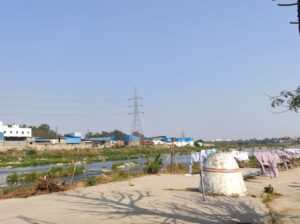
Fig 6: A picture of the Dhobi Ghat (a designated space for the washerfolk community to wash the clothes along the river Musi) in Moosarambagh
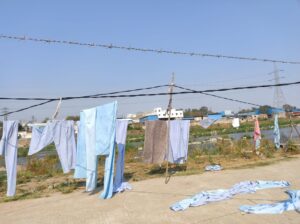
Fig 7: A picture of the Dhobi Ghat (a designated space for the washer folk community to wash the clothes along the river Musi)
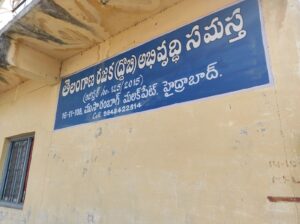
Fig 8: A picture of the ghat is registered and maintained by “Telangana Rajaka (Dhobi) Development Organization”. Here, Rajaka refers to the caste name for the washerfolk community in Telugu.
Musi as a source of entertainment and community:
Everywhere in the basthi, even today, young men and boys congregate at the far end of the basthi where the Musi flows and sit down to have conversations. The young boys play in the open space every evening, where the river turns into sewage within the city stretch.
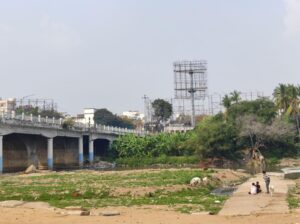
Fig 9: A picture of the open space along the river Musi in Moosa Nagar under the Chadarghat Bridge, where children and young people spend their evenings
Khairunnisa, another woman who was born and brought up here, is now raising the fourth generation of her family here., “Hum logan subah humarein doston ke saath nadi ke kinaare khelthe the aur tairthe the aur tab paani itna saaf tha thi pair dikhthe the. Dhobhi logaan aur hum log bhi humaare kapde vahi dhothe the.” (“I used to play and swim with my friends in the morning along the river. The water used to be so clear that I could see my feet. Along with the dhobhi community, I also would wash our clothes there”.)
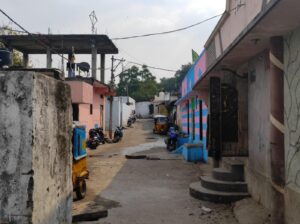
Fig 10: A picture of the Moosa Nagar neighbourhood during the day
Moving away from Moosa Nagar and Moosarambagh, just a few kilometres along river Musi, is another neighbourhood with a very different relationship with the river. The neighbourhood is called Vaddera Basthi. The strong, foul smell of the river greets anyone who enters the neighbourhood. The communities in this basthi, who came to the city for work, settled along the river Musi long ago. Over the period, the city and everything around the river grew. The industries have been dumping toxic wastes in the river and the community suffers the consequences of these actions. A conversation with the community’s elders is enough to understand the worsened situation of pollution in the neighbourhood.
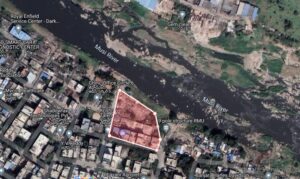
Fig 11: A snapshot of the Vaddera Basti neighbourhood along the course of river Musi.
Musi as a site of eviction/violence:
This view is from the house of the Teegala Guda slum that is along the Musi River in Amberpet. This is the slum where a few houses were demolished that were along the Musi by the Musi River Development Front.
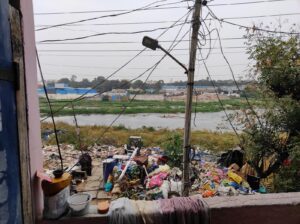
Fig 12: A picture of the demolition of houses along the river
Many temporary huts and sheds were demolished at Teegala Guda slum of Amberpet in March 2022, reportedly by GHMC (Greater Hyderabad Municipal Corporation)[3] and revenue officials. Several persons were detained from the site for protesting against the demolition and kept in police stations till evening. Close to 300 dwellings were uprooted while the residents waited along with their baggage on the roads. The remains of the demolition are still present even after nine months.
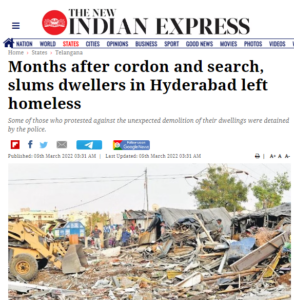
Fig 13: A snapshot of the news of demolition carried out by the authorities.
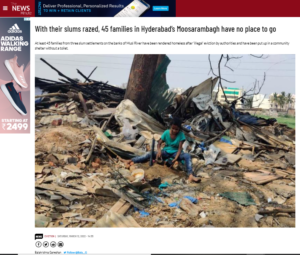
Fig 14: A snapshot of the news of demolition in the neighbourhood by the authorities
The river is not just a source of aesthetics, spirituality and culture; it is also a site the communities depend on for the various needs of their everyday life. A look across the neighbourhoods along the river is enough to understand the multiple ways in which communities depend on the river. Though the city river stretch is ecologically dead and polluted, many neighbourhoods still cannot function without the presence of the stretch. This also means that the communities that are most marginalised and live across the river stretch are the people who face significant loss. There are common sights of the community sending their cattle to graze along the river. In a heavily urbanised Hyderabad city, especially along the Musi, the idea of “Commons” has become limited and shrinking. As rapid urbanisation intensifies worldwide, contestations over how city space is utilised also intensify. The most prominent sites of this contestation are efforts by city residents to claim important urban commons like open places, parks, rivers, streets or any shared resources of urban communities. The assertion of any of these resources shared with others is a way of resisting the commodification of these resources. The most marginalised depend on the urban commons, and it is through the different ways of their dependence that these assertions are expressed, conveying the relationship the communities have with the commons.
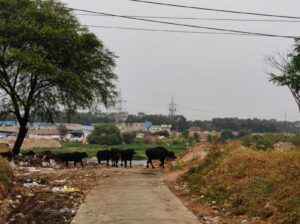
Fig 15: A picture of the cattle grazing along the river Musi
The trucks everywhere in this community are garbage trucks, as most members here are garbage collectors.
Annemma, one of the elders in the community, while showing the Musi River from her house, shows her rusted water pot in the kitchen and complains about the pollution of the river, because of which the rust intensifies. The nearby women who have grown up here show their ankle rings and the rust it has acquired from river pollution. They complain that this does not happen in their native villages. Along with this comes the strong stench of the Musi, and on the other side of this stream are the small industries that release their effluents into the river by night, turning it into a harmful place.
The three places represent different lenses and the nature of the communities’ relationship with the river on different levels. While one neighbourhood talks about their memories of celebration while reminiscing the river Musi, another neighbourhood speaks of their relationship with the Musi through their work. All the members of the communities have been impacted intimately by the current state of the river, but they also have fond memories of their relationship with her past. These histories also relate to the policy gaps but, most importantly, are usually the lenses that are routinely missing while designing the policies. Through these histories, the policy must be centred and the city and river can be understood. History and culture have a great potential to play a significant role in understanding the past, present and envisioning the future of urban rivers, and the Musi river is a great example of this.
Note: Special Thanks to the people of Moosa Nagar, Moosarambagh. This is an attempt to look at the river from the people’s lives, language and memory.
[1] Bathukamma is the state festival of Telangana and it is also called the festival of flowers.
[2] Alam is the symbol of the climax of the observance of the Moharrum mourning in Hyderabad. Moharrum is a 10-day mourning ritual that is observed by the shia sect of muslims all over the world.
[3] https://www.newindianexpress.com/states/telangana/2022/mar/05/months-after-cordon-and-search-slums-dwellers-left-homeless-2426532.html
